Over the Pond – Part 6
Austria – Johann Strauss, Mozart and Marching Bands.
Sunday, August 31st.
The scene to which I awoke was nothing short of magical. The first of my senses to welcome the new day was hearing. At first only in the background of dreams, but with increasing volume as the fog of sleep dissipated, I heard the distinctive sound of an old time Oompah marching band. Rolling out of bed to greet the day, I opened the window to a stunningly picturesque scene (see sidebar picture); the sound of “oom pah pah” enveloped me. There was definitely a live band playing somewhere, although 7 on a Sunday morning seemed an inappropriate time for band practice in any culture.
Then it stopped.
Hmm, that’s strange, but not inconsistent with the surreal I had come to expect over the last week. Everything here was different.
I took a minute to breathe in the morning air and bask in the amazing panorama before me, then turned from the window and commenced with my morning routine in preparation to greet the day and my fellow travelers.
Ten minutes later, when I stepped out my door into the common area of the pension, the band struck up again. Now with eyes wide open, I went to investigate. Following the sound, what I discovered was a perfect fit for this dreamlike storybook to which I had awoken.
On this clear alpine morning in a village right out of an Austrian tourist brochure, along the main street of the hotel complex marched an Oompah band, forty strong in traditional Austrian garb. Hallelujah, I went to bed God-knows-where and woke up in Disneyland; but this wasn’t Disneyland. This was the real thing. I had not yet seen any of my traveling companions so for these few brief moments, I stood transfixed, watching this amazing performance unfold in front of me.
Weddings in Austria, Germany, and Switzerland can be as mainstream and familiar as anywhere in North America. If you opt for a traditional wedding in any of these alpine cultures though, you had better have a well tuned sense of fun, as the old traditions are built on a framework of ribald festivities and exaggerated pageantry that can carry on for days. I will not expand on this as that’s another chapter in itself, but it’s an entertaining study if you have the time and interest.
The marching band tradition is apparently a very localized one. The newlyweds, having survived the main event the day before, are not free to begin their new lives together yet. Today, they will be the focus of much good-natured “tomfoolery” designed for them to prove their suitability for wedlock. A price must be paid for future matrimonial bliss. I will leave that for you, the reader, to research at your leisure.
For all these shenanigans, their day must start early. At 7AM a marching band performs with great gusto – I suspect many of the participants were still partying from the night before -outside the newlywed’s window. This boisterous performance is repeated every fifteen minutes until the couple finally makes their appearance.
This was the pageant to which I awoke. Austrians love to party, and if a day long party is good, then obviously a two or three day party is even better.
Our arrival could not have been better timed, having afforded me this experience albeit only as a spectator. We did, however, have an itinerary and more adventures awaited us down the road.
After another typically healthy Bavarian breakfast, we left the wedding celebration behind and prepared to hit the road again.
Austrian CGE member, Dr.Walter Kirchweger, had just arrived and took the lead as our tour guide for the day. The Autobahn route from Kaltenberg to Walter’s home in Amstetten is somewhat circuitous running west, then south over the Danube, then back east again - but this was Walter’s backyard and he was not about to lead us over so boring a route. With the advantage of local knowledge, the good doctor led us through some really entertaining twisties on a route south to Amstetten.
Walter’s familiarity with this track made it a challenge just to keep his taillights in sight. Suffice to say there was a lot of leanin’, grinnin’ and sparkin’ going on behind him until I decided that keeping up with Walter took second seat to staying up on Yomaha, if you get my drift. Never challenge a man on his home turf on a borrowed bike. I was still giggling like a school kid when we reached the Danube at the end of the twisties. Thanks for a great ride, Doc. It was more fun that a barrel of monkeys - a solid hoot and a great way to start the day’s ride.
First stop en route was the Danube River. The Danube is one of Europe’s most significant transportation routes. Due to the familiarity of Austrian composer Johann Strauss’ “Blue Danube”, we tend to associate the Danube with Austria. However, from its source, less than a third of the Danube travels through Germany and Austria. Heading east out of Austria it winds through Slovakia, Hungary, Croatia, Serbia, Romania and Bulgaria until finally spilling out into the Black Sea. Its headwaters are in Germany’s Black Forest region and this is the continental divide. The other major aquatic highway in Germany, the Rhein, flows north. A 171 km canal and lock system connecting these two waterways links the North Sea to the Black Sea, making this a truly transcontinental superhighway. In a word, even this close to its source, this is one “big ass river”.
We pause long enough on the banks of the Danube to consider its significance, snap a few pictures then continue on our way south to Amstetten and lunch. It is a short distance from the Danube and very quickly we are sitting on Walter’s terrace enjoying an elegantly prepared and served lunch by wife, Elfi and his two daughters, Connie and Uli.
After this midday break, we once again saddled up and, led by Walter, headed west.
Our first stop was for gas at Linz. Travel on major motorways in certain EU countries requires that a road tax vignette (sticker) be purchased and always displayed on the windshield of the vehicle. Austria and Switzerland impose this road tax - Germany doesn’t. At this first gas stop, Walter took the opportunity to ensure that the visitors were all legal (thanks to the due diligence of my host, Ad, I already was) and generously purchased vignettes for those who weren’t. As we were now venturing out on the Austrian autobahn, this was necessary. Walter left us at this point, plotting a route through Austria to land him in Tiefencastle, Switzerland that night. We four, now legal, headed first to Salzburg, Austria then back into Germany for another day of sightseeing before our planned arrival at the CGE rally tomorrow night. We should have had a couple of easy days ahead of us. We could not have guessed how long tomorrow would end up being.
Our destination for the night was the Hotel Kohlmeier in Kranzberg. Since we planned to visit Dachau the following day, Kranzberg, a municipality of less than 4000 just 25 km. north of Munich, presented a perfect starting point, and allowed us to avoid Munich traffic.
…But since we were in the neighborhood already, we had to pay Mozart a visit first.
Salzburg, best known as the birthplace of Wolfgang Amadeus Mozart, more recently gained world recognition as one of the primary location sets for “The Sound of Music”. With three universities, it has a decidedly cultural air not dissimilar to Heidelberg.
Gie and I managed again to lose Phil and Harry somewhere at the entrance to Salzburg. Searching for our lost compadres through the many narrow streets running off the town square afforded us an hour or so of sightseeing around Salzburg. Although Salzburg’s population is close to 200,000, most every route in the old town radiates out from the town square, so it was not an unreasonable expectation that we might find each other. It was not to be so. Again trusting in the power of Garmin – and knowing that Harry had that night’s accommodation location plotted – Gie and I saddled up and hit the road.
Although Krantzberg was less than 175 km. from Salzburg, we managed through artful exploration of numerous backroads between the two to spin it out all afternoon.
Chiemsee - sometimes called the Bavarian Sea - is midway between Salzburg and Rosenheim. It was also directly on our route to Krantzberg. Chiemsee is a very popular recreational area and it is easy to see why - the area is beautiful. One of the larger islands in the Chiemsee is Herrenchiemsee, which is home to a castle of the same name. Herrenchiemsee is one of the three famous castles of Ludwig the second. Neuchwanstein is the best known and that was on the itinerary for tomorrow.
We didn’t see Herrenchiemsee, but we did find Harry and Phil relaxing on the lake shore. Reunited we proceeded north towards Munich through some of the most idyllic countryside I have ever seen. Traversing from tiny country backroad to tiny country backroad, I was convinced that we were totally lost most of the time, but didn’t really care. The roads we were on were (for the most part) single lane and meandered over rolling farmlands linking tiny settlements, some no more that two or three houses. There was a sense that we were riding down someone’s private driveway most of the time, except that there were no fences or gates and they all linked together in a random flowing weave pattern. Locals waved happily to us as we seemingly drove through their front yards but it was “all good”. There was that same strange surreal feeling that I was to sense many times on this trip.
We lingered long enough that daylight was fading before we reached our destination. This was only significant because at some point I had lost my headlight, so we hastily made tracks to Hotel Kohlmeier, arriving at dusk. We would address the headlight issue in the morning. For now, we parked, ordered beer and laid into some of the biggest ribs I have seen this side of Montana. Bike maintenance could wait - rider maintenance was the order of the hour.
This time tomorrow we would be in Tiefencastle, Switzerland – or so we thought!!!
Subscribe to:
Post Comments (Atom)

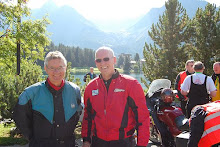




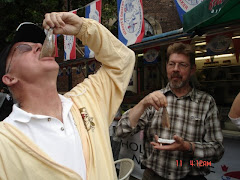
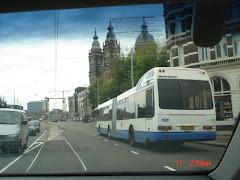





















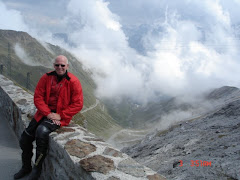
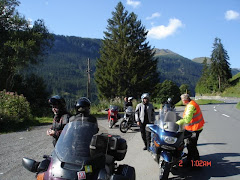





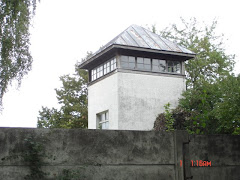






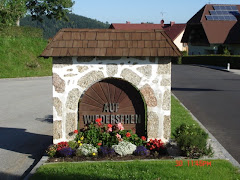




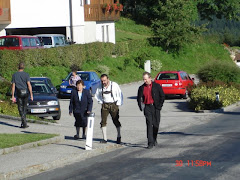





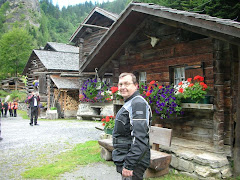.jpg)




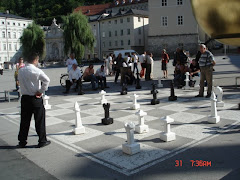






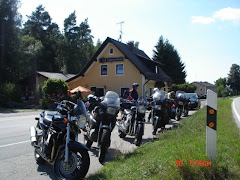













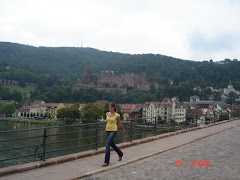









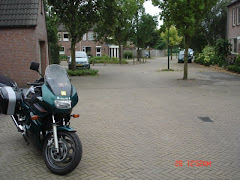




















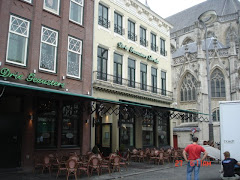
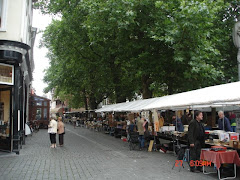



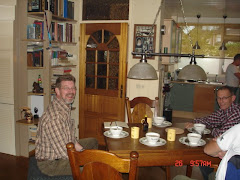





No comments:
Post a Comment